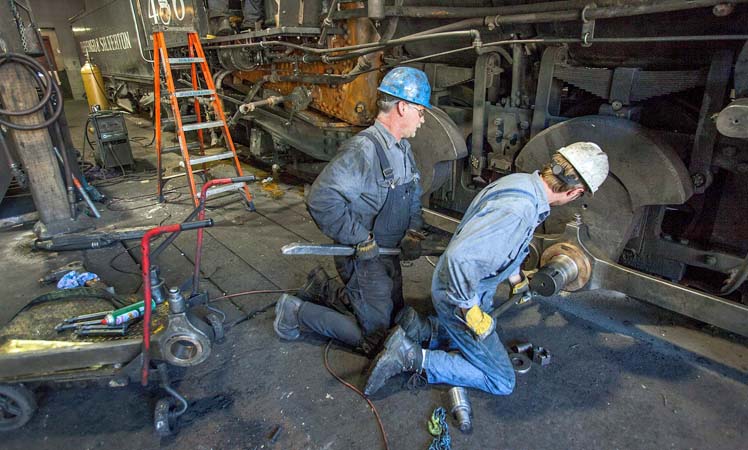
Durango Colorado USA - Keeping locomotives from the 1920s endlessly chugging to Silverton takes more than an oil change.
At the Durango & Silverton Narrow Gauge Railroad, engineers are replacing decades-old parts and systems to keep the trains, a key piece of the economy, running.
The locomotives run 500 steam trips a year, or about 40,000 miles.
The fleet is expected to carry about 185,000 passengers this year, said Christian Robbins, a spokesman for the railroad.
From linen drawings to cast iron brake shoes, many aspects of the train needed to be modernized, and about a year and half ago, mechanical foreman Randy Babcock and his team started that process.
"It's a working railroad, I can't necessarily preserve grandpa's way of doing it," said Babcock.
Some changes will help staff put locomotive number 476 back on the tracks after 17 years in the museum.
Babcock has five locomotives running now, and he would like to have six or seven so they can be rotated more easily for regular maintenance.
As part of a concerted effort to make upgrades, some parts that have been operational for decades are being replaced to prevent problems.
That gets more challenging when the plans for them have been lost.
With computer-assisted drafting, pictures of the parts can be used to create digital plans and models to create replacements.
The staff also can correct and tweak the parts without changing the historic nature of the engine, said Larry Carlson, a mechanical engineer and machinist.
For example, the staff are replacing main rods that drive the train forward because some of them are 80 to 90-years-old.
While designing the replacements, Carlson flattened the design to keep them from hitting the asphalt streets at crossings, because the staff noticed that the old rods had worn down from hitting the roads in the same place, he said.
The staff is also making changes to the brake system to allow the use of low-friction brake shoes, a railroad piece similar to brake pads on a car.
The new brake shoes are lighter and produce less heat.
With digital plans for the new brake parts, Fort Lewis College students printed plastic models for the railroad's staff to send to a foundry.
"I think it's really cool we can use the cutting-edge technology of 3-D printing for a 19th century locomotive. We're keeping the past alive," said Ryan Smith, an associate professor of physics and engineering who guided the students.
The new brake parts could be installed on some engines in the fall, after the busy summer season, Babcock said.
Rebuilding the number 476 also will require new technology because the entire smoke box, on the front end of the locomotive below the smoke stack, has rotted out and must be rebuilt.
The compartment where the smoke and hot gases come together has 50 to 60 hand-machined bolts that will be replaced using a computer-run lathe.
The smokebox is just the first of hundreds of upgrades to make the antique run again, and work on the engine could take 18 months to two years.
But moving into the 21st century is likely to take much longer.
Babcock hopes to have most of the work done over the next 10 years, but it likely will be ongoing even after that.
Brandon Mathis.
provisions in Section 29 of the Canadian
Copyright Modernization Act.


